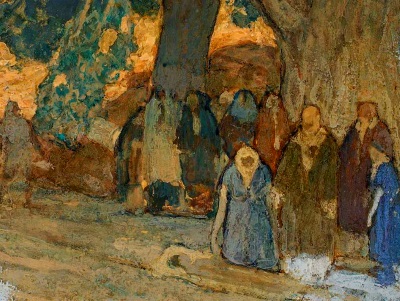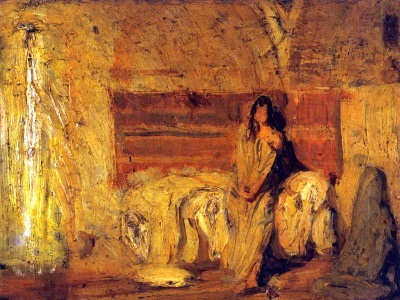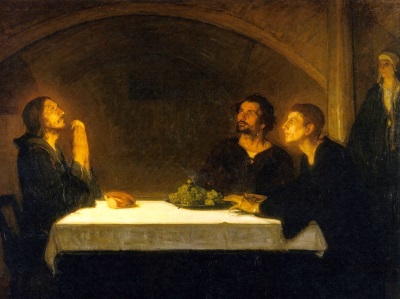The fulfillment of the Ten Commandments, including the commandment to honor father and mother, consists in living a life of love and unbroken unity. A person can do no better service to parents, brother or sister, wife or husband, or children, than to lead them to such a life and to call others to go this way.
It is in connection with this commandment that the relationship between Jesus and His mother is often brought into the picture. The Gospels mention four episodes, four confrontations between Jesus and his mother. First when he was still a boy (Luke 2:41–51). As a twelve-year-old he left his father and mother and went to the house of God to read, study, and represent the truth. When he had fulfilled that task, he returned to his parents (who had been anxiously looking for him) and from then on was obedient to them as befitted a child of his age. This was the first break the future Savior of the world made. It placed him in such serious opposition to his parents that his mother asked him, “My son, why have you treated us like this?” At the same time we can see that Jesus (who was truly human and grew up like any other boy) was neither forward nor precocious. After this first break, he took his place in his parental home like any other child his age.
The second confrontation was at the wedding in Cana (John 2:1–11). Jesus had just begun his public activity. The first remarkable deed of his to be recorded took place at this celebration of unity; that was the time he chose to reveal the glory of God on the ground of the first creation. This time the conflict between Jesus and his mother was more obvious than when he was twelve. Mary, his mother, believed she still had authority over him; she wanted to give him advice and expected him to follow it. His answer was sharp: “Woman, what have I to do with you? My hour is not yet come.” His mother was not the one to determine the hour; that had to come directly from God. And then Jesus did even more than she had expected.
In the third encounter the conflict is intensified yet more. Jesus, facing a crowd of people, is proving to them the decisive power of God’s kingdom over their bodies and souls. His mother and brothers, standing at the edge of the crowd, think he has lost his wits. They send him a message to go home to his mother, and Jesus sends back the answer: “Who is my mother? Who are my brothers?” (Matt. 12:46–50). You, Mary, are not my mother; you other sons of Mary are not my brothers unless you do God’s will. The church of those who do the will of God is my mother, and my brothers are those with whom I am in unity, who do the will of my Father.
All the threads that had apparently been broken by these shaking confrontations were drawn together again in a final unity. That was the fourth encounter. When Jesus was put to death, His mother and his beloved disciple John stood at the foot of the gallows, the cross. And he told his mother and his beloved disciple to take care of each other (John 19:25–27). He united his disciples, those who did his will, with his mother, who from that moment on also wanted to do his will. So we find his mother, who had previously seemed to separate herself from him, waiting with all the others for the outpouring of the Holy Spirit and for the creation of the first communal church at Pentecost. From then on she belonged fully to the circle of those who believed in her Son (Acts 1:14).
Adapted from God’s Revolution (Walden, NY: Plough, 2021). The original document can be viewed in our digital archive: Meeting transcript, January 13, 1933.
Article edited for length and clarity.


